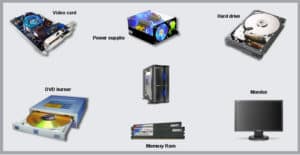Definition
- A computer network is a number of computers linked together to enable them to share computing resources.
- Networks can be permanent (via cables) or temporary (via modem)
- The sharing of resources through a network can also be local or global
- Networks allow different types of computers to communicate.
Benefits
- Information can be accessed in remote areas that is part of the network

- Information can be shared easily
- Information generated by a single user can be shared world-wide instantaneously.
- Networks can maintain a single file without copying entire file to computer.
- Resources can be shared easily
- One shared file rather than many separate files
- Physical resources can also be shared (e.g. printer)
- Transferring signals on a network
- To transfer information on a network, we need to consider three areas.
- Hardware needed to transmit information over the network
- Most cost-effective method to transmit and receive the signals
- An standard to code and decode signals (e.g. ASCII)
Analog Transmission
- An analog signal is a continuous wave that reflects variation.
- a telephone mainly uses analog signals for local distribution
- Digital Transmission
- A digital signal is in binary format (i.e. 1’s and 0’s)
- Digital lines are faster and more accurate
- Can handle text, graphics, voice, video at high speeds.
- HIGH cost!
- Modem (MOdulator/DEModulator)
- Many computers are connected to the internet via a phone line. However:
- Computers are digital
- Phone lines are analog
- Modems provide a link between digital computers and analog phone lines.
- Modems convert:
- digital signals to analog signals (modulation)
- Analog signals to digital signals (demodulation)

A very nice piece